

tesc_cctvpro
-
Content Count
364 -
Joined
-
Last visited
Posts posted by tesc_cctvpro
-
-
hi installed a 4way avtech dvr was working ok, but now cant see live images over net , but can still the recorded files. any one else had this problemYou can still see recorded files over the net, but not the live view ---- why not take a screen shot of what you are looking at and post it here.
-
Bluzman --- why not just try the camera you have and then build from there if any adjustments are needed.
However if you want to capture plates without text - get an LPR camera, if you need text get an ANPR camera system.
-
WOW, I didn't know my Question was going to start a potential war.Fist off I am doing this as a hobby ,Second I am a Licensed Master Electrican not a half wit, more like a 2/3rds wit.
Processing the plate text is not necessary, it would be cool, but for now not necessary.
At the basic level is the plate cam always recording or is it motion operated on a preset window thru the DVR?
if it's always recording then to me any cam should work as long as it has a view of the strret in such a way that it is parallel with the cars.
I am looking for a setup like a Red light cam , where I can set up some parameters and if a vechile passes thru it I get an image of there plate.
Capturing the vechile or occupants for the most part is taken care of already with other cams already in place.
I am looking to do this past the hobby for my holiday displays, I set up a large scale halloween display on my lawn and have had several items stolen and such over the past few years. I captured people and there van on cam but was unable to obtain a plate image for the police, which prompted me to think about plate capture stuff. I am not running a toll booth or boarder patrol station so the trellis over my roadway probably won't go over big the town, but would be highly effective in the capture I can see that.
I can list the specs of the Speco CVC652-hz if necessary but I think you guys have looked them up already. The image that was posted with the box cam 268x zoom is the speco camera that I have.
I think experience is a good thing it gives people insight on how to start to set up something or at the very least more information to research to gain a better understanding of how the system should work in the perfect world.
I am looking to first grasp the concept of how the plate capture cam operates, then I would know if the cams I currently have will work for the application. Ex: do I need a fast or slow shutter speed ?
Do i need Back light compensation, and if so is there different types or degrees
do I need IR illuminators, or a cam with IR leds built in, or No LEDS but still night capable like USAG INC. midnight cam
do i need to i nstall a large led lamp that will light up on motion and give ample lighting to the cam for the shot?
I was once told by someone that the speco cam I have was used for plate capture, not sure if it has the correct specs for it.
anyway --- not sure if we can post this but here's a LPR tutorial, you should get a lot more value from that
http://www.licenseplaterecognition.com/ Hmmm....that only addresses the software application for text recognition.
Good old trusted Wikipedia is the best place for quoting many technical issues.
At the front end of any ANPR system is the imaging hardware which captures the image of the license plates. The initial image capture forms a critically important part of the ANPR system which, in accordance to the Garbage In, Garbage Out principle of computing, will often determine the overall performance.
License plate capture is typically performed by specialized cameras designed specifically for the task. Factors which pose difficulty for license plate imaging cameras include speed of the vehicles being recorded, varying ambient lighting conditions, headlight glare and harsh environmental conditions. Most dedicated license plate capture cameras will incorporate infrared illumination in order to solve the problems of lighting and plate reflectivity.
Many countries now use license plates that are retroreflective.[13] This returns the light back to the source and thus improves the contrast of the image. In some countries, the characters on the plate are not reflective, giving a high level of contrast with the reflective background in any lighting conditions. A camera that makes use of active infrared imaging (with a normal colour filter over the lens and an infrared illuminator next to it) benefits greatly from this as the infrared waves are reflected back from the plate. This is only possible on dedicated ANPR cameras, however, and so cameras used for other purposes must rely more heavily on the software capabilities. Further, when a full-colour image is required as well as use of the ANPR-retrieved details it is necessary to have one infrared-enabled camera and one normal (colour) camera working together.
Blurry images make OCR difficult or impossible. ANPR systems should have fast shutter speeds to avoid motion blur
To avoid blurring it is ideal to have the shutter speed of a dedicated camera set to 1/1000 of a second. Because the car is moving, slower shutter speeds could result in an image which is too blurred to read using the OCR software, especially if the camera is much higher up than the vehicle. In slow-moving traffic, or when the camera is at a lower level and the vehicle is at an angle approaching the camera, the shutter speed does not need to be so fast. Shutter speeds of 1/500 of a second can cope with traffic moving up to 40 mph (64 km/h) and 1/250 of a second up to 5 mph (8 km/h). License plate capture cameras can now produce usable images from vehicles traveling at 120 mph (190 km/h).
To maximize the chances of effective license plate capture, installers should carefully consider the positioning of the camera relative to the target capture area. Exceeding threshold angles of incidence between camera lens and license plate will greatly reduce the probability of obtaining usable images due to distortion. Manufacturers have developed tools to help eliminate errors from the physical installation of license plate capture cameras
-
@tomcctv ----- here's the camera that took that first picture
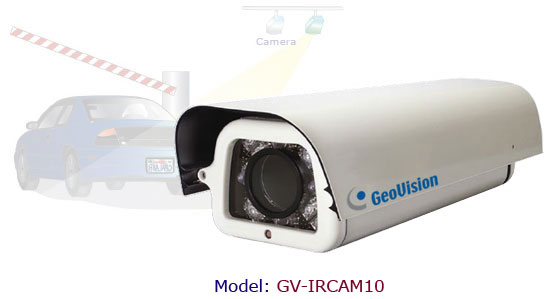
-
Nobody here could ever make a recommendation for a plate capture camera given the information provided here!I think the veteran installers on this forum would agree we need to know the requirements in order to make a final recommendation. However, I think you are pushing a bit too hard on this ordering of requirements first, recommendations second. Most DIY who visit this forum speak in generalities and don't know what specific features to specify. It's often helpful to toss out this or that camera that may be close, discuss the features and benefits, help them flesh out the list of requirements, and then zero in on some final recommendations.
Best,
Christopher
Either way you going to need to ask the same questions to help them flesh out the requirements aren't you? More so because they don't understand the concepts and requirements - you may need to ask more questions.
In fact I only have a few questions: What's the problem that drives you to want a camera? What will you do when you see the images or receive the alert you are hoping to see? What are the conditions under which you will need to obtain these images.
It is exactly all these half considered recommendations that have led to a situation where people are of the opinion that CCTV is something that can be done by any half witted person. This make a sale of one camera recommendation regardless of whether the person is safe in their home at night or not, is what has brought the CCTV industry to the state we are in ------- How many DIY installers of home burglar alarms do you see?
The answers to those questions make no technological demand -- My experience has been that most DIY have a widely distorted perception of what a camera can and cannot do - how many of them consider the size of the lens, how many proposals here have even touched on lens size for the application.
What is the point of your recommendation of anything - if it fails to satisfy the persons need in the end!
I live in a country where 17 armed bandits enter people's homes and slaughter the entire family as a pretty regurlar occurrence, home burglaries are rife, driveway hijackings are real and vehicle theft common place. How many DIY CCTV systems have contributed anything to these problems??? I have yet see one, that made any contribution to anything significant!
Just because you are giving advice free - should you give it any less thought? If somebody is afraid of being burgled while they are in the house and they think that putting up a 1/4" Sharp camera with a 3.6mm lens is going to save them ------ don't you need to expose the weaknesses in that thinking and make a suggestion that will really contribute to their safety !!
-
Where will that camera be recording to? Does it have SD capability for recording --- if you don't want anything running 24/7There are 2 options.
1. Directly to a dedicated server using external FTP.
2. Recording to a USB attached to the router using local FTP, that uploads the files to the dedicated server once every x hours.
The cameras I was looking at before the suggestions here have both options.
Ok, that's why not asking these questions in the beginning is a pointless exersize, as the server will need to run 24/7. Is that your company server? A server at Home?
-
Why not just download video files specified by the time that you want instead of downloading the files via the pack time? For example, if there is only a 10 minute incident that you want to download, just search for it and write down the time that it happened and just download that specific time through the "BackUp" on the main menu.It's all related to what Rory said in the beginning ---- selected pack size!
-
am total comfused by your post.first image, jetwiew
your camera that you use, busytrade
second eclips picture image , alibarba
do you not have a picture of the camera that has taken the view. the jetview image is taken with a camera that has them same spec as the spectra. as they both use the same manufactura.
Why would you be confused --- I am not brand promoting!
The first image highlights the high contrast levels involved in night time plate capture.
The second image from my favored IP/Analytics provider illustrates the specialized function of processing characters as opposed to images.
The third is an example of a camera we have used for low budget applications --- by the way it's manufactured by Lonrun Di-te in Guangzhou China, as is the last Image in the other post.
The animated image illustrates the technique of headlight masking.
I have no interest in selling a product here for this low level application and potentially low margin return --- am just taking the time to point out challenges of night vision plate capture.
I think the confusion arises from your tendency to post images to promote a product - hence your confusion when you imagine that's the sole purpose of posting images on the forum.
-
Where will that camera be recording to? Does it have SD capability for recording --- if you don't want anything running 24/7
-
If you don't want to process the plate text, and you aren't going to be facing night time surveillance ---- you could set that camera up to get a good shot of the plate ------
thats interesting. that image was not taken with this camera.
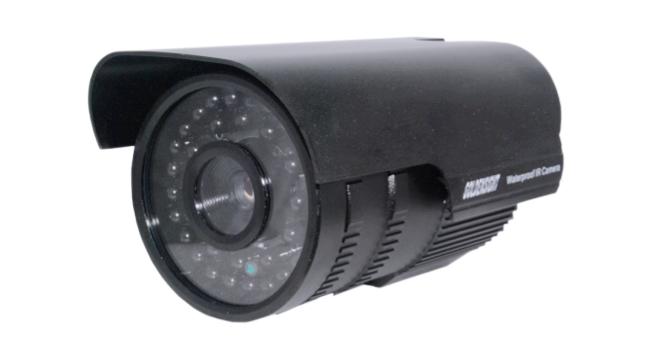
it was taken with a camera of this spec. it was taken via a box camera with same spec as the CVC652-HZ
SPECIFICATIONS
Item Specification
Image sensor 1/4 type EXview HAD CCD
Number of effective pixels Approx. 440,000 pixels
Lens 18 x zoom, f=4.1 mm (wide) to 73.8 mm (tele), F1.4 to F3.0
Digital zoom 12 x (216 x with optical zoom)
Angle of view (H) 48 deg. (wide end) to 2.8 deg. (tele end)
Minimum working distance 35 mm (wide end) to 800 mm (tele end)
Sync system Internal/External (V-Lock)
Minimum illumination 0.7 lx (typical) (50 IRE)
S/N ratio More than 50 dB
Elctronic shutter 1s~1/1000s
White Balance Auto, ATW, Indoor, Outdoor, One-push, Manual
Gain Auto/Manual (-3 to 28dB, 2 dB steps)
AE control Auto,Manual, Priority mode, Bright, EV compensation, Back-light compensation
EV compensation -10.5 to +10.5 dB(1.5 dB steps)
Back-light compensation On/Off
Privacy Zone Masking On/Off (24 positions)
Flicker cancel --
Focusing system Auto (Sensitivity: normal, low), One-push AF, Manual, Infinity, Interval AF, Zoom Trigger AF
Picture effect E-Flip, Neg. Art, Balck & Whiter, Mirror Image
Camera operation switch Zoom tele, Zoom wide
Video output VBS: 1.0 Vp-p (sync negative), Y/C Output
Camera control interface VISCA (TTL signal level), baud rate: 9.6 Kb/s, 19.2Kb/s, 38.4 Kb/s, Stop bit: 1/2 selectable
Storage temperature -20 to 60 deg. C
Operating temperature 0 to 50 deg. C
Power consumption 6 V to 12 V DC, 1.6 W (motors inactive) 2.5 W (motors active)
Mass Appro x 225g
Dimensions (L)120mm x(W)62mm x (H)65mm
I never said it was! I used the two pictures to highlight the problems of night time plate capture ----pre-supposition always clouds rationality!
That Camera as I said is a low end application: This image comes from a box camera from the same manufacturer:
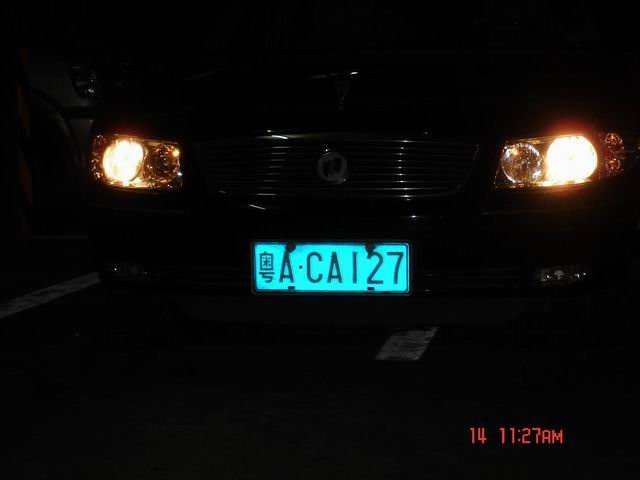
-
License plate viewing is one of the most challenging aspects of surveillance --- especially if you are going to be facing headlights in the night time, creating such high contrasts that a lot of WDR cameras will not even be able to process.
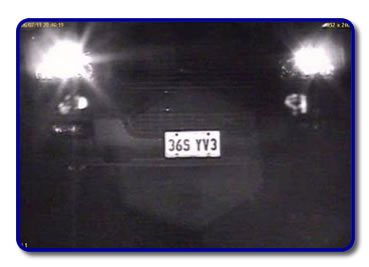
Then you need to make sure you are using a progressive scan camera as opposed to an interlacing camera. The camera you have uses a 2:1 Interlace scanning method, so I'm not able to say how well it's going to handle charachter definition on a moving target.
Your reference to software integration - raised the possibility that you might be talking about number plate processing as opposed to straight forward viewing - am sure you are familiar with OCR technology when scanning documents on a home scanner ----- the text cannot be processed in any way, from a picture.
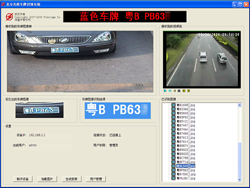
We have used this camera before with good results, in what I would call low to mid end application.

Some of these cameras are designed to handle the high contrast, and another design utilizes masking of headlights or very bright areas - effectively blacking out the head/tail lights.
The short answer is that that is not an ANPR LPR camera as far as I can see!
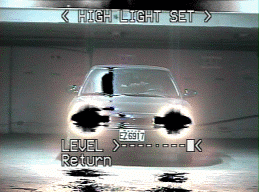
If you don't want to process the plate text, and you aren't going to be facing night time surveillance ---- you could set that camera up to get a good shot of the plate ------
-
Nobody here could ever make a recommendation for a plate capture camera given the information provided here!does experience not count.
No ----- no amount of experience will ever replace either seeing the actual conditions under which the camera is expected to operate or getting an actual detailed camera specification from someone who has seen the conditions and environment.
Furthermore experience means nothing if we don't know if somebody just wants to record images of plates or wants to record plate details - actual characters.
Experience further will mean nothing if we have not established that this is just a for fun hobby, or has an actual requirement to pass the plate information on to a security enforcement agency for the purpose of law enforcement.
Or if you have not deciphered the degree of accuracy required.
It's a joke when somebody says I need to capture plates, and somebody else says --- buy this camera!!
-
hi VCA would start to cost. some budget cameras will give sene changes or moved objects. like the link i sent you. plus it also has sound both ways. and email alert.if its just your area that you need to protect then 1.3mp will be fine for you.
but getting it to your pc will give you a problem if your office has a full network inplace. you will need the help of your IT guys if you wish to view your camera away from the office or plug it into your company network to get passed the firewalls that could be in place.
From what you are telling me --- get one of those usb devices that somebody has discussed here, and plug a cheap covert analog camera into that. Record it to your PC ----- you will very quickly see who is coming into your office and taking your stuff and it will cost you virtually nothing, in fact to achieve what you are trying to do --- you could probably do it effectively with a web cam!
-
Again --- when you have defined the technical specification of the camera , and you have defined what you consider to be a good manufacturer. Buy the cheapest camera that meets the criteria.
The ONLY reason people find it necessary to ask for a camera recommendation is because they have not defined the technical specifications of the camera.
Try to write the technical specification for your camera:
Light sensitivity, special considerations such as backlighting, considerations such as IP 66, Explosion proof, tamper resistant, etc ....once you have done this ---- asking for a recommendation that's going to give you the right camera is pretty straight forward.
Nobody here could ever make a recommendation for a plate capture camera given the information provided here!
-
I am not sure I understand your question. Nothing has moved, I just would like only something with motion detection so I do not wast bandwidth and HDD space.what is this camera supposed to be watching out for? and why?
-
Do you just want a picture of the plates, or do you want to do anything with the information?
If you want to capture plates check out how they do it at Toll Gates or military check points and then ask yourself why it's done like that?
capturing a plate which somebody stole from another vehicle and put on theirs isn't of much use , capturing a plate without the context of the vehicle carrying it, nor the occupants is of very little value --- I presume this is a hobby!!
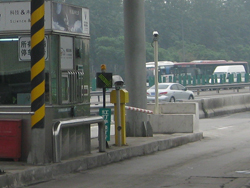
The point --- effective plate capture 1M Maximum height, 1 M maximum distance --- you can do it with increased margins, but decreased effectiveness as you go higher.
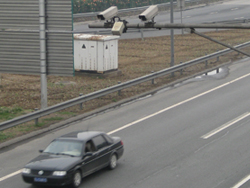
-
Am I looking at this correctly or would you advise a different solution, such as using regular webcams or camcorders with a linux or windows machine?
Zoneminder is a great program - but not if you aren't into linux
Once again ----- you are not wanting to watch everything going on in your office --- something has moved you to want to put a camera there --- what is that?
The majority of reputable brands are pretty much the same thing - decide first what is it that moved you to want to provide this camera -- once you have that, develop specs that will address that issue effectively.
Then set up supplier specs.
Reputable brand , warranty, local stock, support, backup .
Once you have your camera spec and your supplier spec....buy from the cheapest one that meets your requirements.
-
Just purchase the same board you were using from here http://www.newegg.com/Product/Product.aspx?Item=N82E16813128421The Egg is a great place to buy all of your PC componets from. Actually the ONLY place!!!!
While early adoption is great in most anything to do with IT --- we usually prefer to stay 6 months behind any new IT technology, hardware or OS! Of course it get's difficult when parts become unavailable - but we have also seen this issue repeatedly.
We specifically use Seavo industrial DVR motherboards and would not normally use an off the shelf PC MB
-
I still fail to appreciate how anybody who hasn't visited this guys site, hasn't established proper Operational Requirements, etc is able to suggest any solution or product.i think to ops first post tols us what he wanted. bringing alarms into it never came from the op.
8 camera system he asked advice on.
alarm systems do have there place but 90% of them are just alert only at the end of the day they only confirm what you already know when you walk back into your burgled place.
CCTV with an alarm system gives 100% at least you now have footage with something the police can work with.
Yes as do the majority of our customers when we first meet. If however that was how it operated, and system design was that simplistic - we actually have no business being in business, because anybody could just decide what they want and go to the nearest store and buy it.
The problem is too many people with no physical security qualifications, jumping into the game because they know how to plug a camera into a network, or cable.
First and foremost , the core of anything to do with security is related to and begins with those of criminal intent, and those who need to defend against that intent.
The core qualification is physical security - cameras, alarms, guns, and networks are just tools that compliment the task of a security company. What we see today is a proliferation of tech boys, and IT kids imagining that because they can plug in a camera and show it somewhere else, they are now the answer to all those "ip clueless" security guys and we see them trying them trying to muscle in to the security arena.
The inter-interoperability of modern systems mean that system engineering has become a multi-faceted process, engaging multi-faceted teams of people.
It's just a plain joke that we have IT switch manufacturers, and their resellers debating with security companies about security solutions. It takes more than your IP camera and Alarm to provide a barrier between the criminal - intent to kill, and his intended victim.
And that is unfortunately the result, when someone who sharpened their teeth putting together their home media player on a network, and then got a reseller agreement to some switch manufacturer who now makes cameras ----putting themself in between the criminal and his victim.
Let the security people design the solution --- the work with them to impliment the solutions.
And we wonder why security people get annoyed by these guys jumping up and down about how IP, HDcctv, this thing and that thing are the hottest potatoes of the time -----> Because you have an ip camera and a switch, don't make the mistake of imagining that physical security professionals are idiots. That the IP industry now has the answers to security issues.---> it remains a joke!
At the end of the day - the most important issues are controlling the phases of criminal activity, giving effect to crime analysis and risk profiling and then selecting the best tools to manage that --- in some cases the best solution may be a limpet mine as opposed to a web camera with 9 leds on it.
How do you expose the difference ---- when someone tell you to use this or that device without taking a minute to assess the criminal or loss potentials being faced.
-
In general, video verified alarms receive a faster response from police by far ------ if a police response is required to the event being monitored that is ----- assuming that video is purely a security device, which it isn't.
It's likely that the requirement in the original posters call for help would involve notifying and call out a police response - but untill he says so, we are making assumptions to fit the solution to his scenario - and if he has a facility security force that would respond to the alert rather than call out the police -- all those wonderful benefits of a system that get's a faster police response would fall on deaf ears.
The ability to verify an alarm via video is a valuable feature - if and when that contributes to the operational requirements of a client.
I still fail to appreciate how anybody who hasn't visited this guys site, hasn't established proper Operational Requirements, etc is able to suggest any solution or product.
The second portion of our design models - the first of which deals with problem definition, is operational response.
At this point we are not yet even talking technical or hardware specifications , and there are still another 3 design considerations after these two.
We are often told by people who want to invest money in a cctv system that the process is unnecessary, because they just want to put a camera here and there.
My company specifically avoids working with these people - the same people who commission 6 month studies when they want to make an investment of any other sort.
Specifically, a poorly designed system will not have any ROI, that is measurable, and will never get down to addressing the real problems - which created a perception in the business owners mind - with limited point of reference - that a camera might solve the problem.
These people are the first to be blaming your company and your equipment for wasted expenditure.
Sure --- approaching installs without a defined process is great for DIY and mom and pop stores ---- but then we view that as making up less than 20% of the surveillance market and less than 15% of the security market.
-
Ah, but the ONLY thing you'd be keeping from an analog installation would be the cabling - your existing DVR isn't going to work with the HD cameras, and you'd need a hybrid DVR to keep some of the analog cameras and replace others with HD cameras. That is, assuming HDcctv was actually viable with most existing cabling installs.Seems to me that currently you cannot even keep the cabling ----- (which was about the only potential value proposition i have ever seen in this) I don't get the point in your statement that the existing dvr won't work with analog --- seems kind of obvious - don't know if i created the perception that i thought it would??
And frankly, you can reuse existing analog cabling with IP as well, using Highwire-type devices. These range widely in price - I think actual Veracity Highwires go on the order of $300 per unit (two required per camera), but I've used others that are <$100 for a set, and they work just fine. Naturally, you also retain some of the other benefits of IP this way... such as the ability to run several cameras into a switch and feed all of them over a single existing coax. All of these devices I've seen are capable of 10/100Mbps, meaning you can easily run several MP cameras through them.My mind boggles at the idea of sending Ghz signals from multiple sources through a 100mbps switch onto a 1.5Ghz/s tunnel - I can see why the HDcctv alliance touts the value of standards such as SMPTE?
Frankly, I love the shift away from coax... using UTP for video and power means I only have to carry one kind of cable in my work van (although I do usually keep ONE box of station-Z on board, mainly for utility purposes... it's small and light anyway), rather than three or four different types.I guess that's valid from a convenience perspective. There is a break even point beyond which co-ax remains the best cost wise, and utp above that --- despite the cost of baluns etc having reduced
-
Thank you for your input. I'm a novice, do it yourself, try to do it right by take experienced people (those that seen it, did it before me) recommendation, sugestion, and make my own determination if that products will works for me. I valued these recommendation, helpful hints, from these people here, your recommendation as of right now did not help me a bit. Thanks.Thanks I get that a lot ---- usually in those cases, we prefer the customer take others recommendations - I'm sorry for wasting your time.
If that is what you get a lot...then why you keep doing it...how does that help me? There are thousand of brands, quality, prices, how do people like me (not in the profession) able to determine what's good for my situation without starting to ask questions first. I have been reading info from this forum to see if I can pick up anything which would help me deciding which brand or make model to use for my situation ( which is part of the research). If according to your input, everybody here needs not ask any question but to ask all company to do demo for them? Be for real, who the hell can do all that? What you told me is ideal situation, which is 100% correct, but common man...it's unrealistic.
I suggested you get first hand visuals of the camera's performance - nothing beats seeing the pictures you are going to get. ----> The kind of answer you gave me is common amongst DIY installers. When I am offering my advice for free, with no intention of making a sale to someone on the other side of the planet - and get that type of response ---- it's best to leave the inquirer find help somewhere else, as such I won't respond beyond this.
-
The way I look at it is people would be willing to pay for more expensive coax if the cameras and DVR's were alot cheaper. Perhaps this could not be said for very large installs where cabling really becomes a large part of the budget but for small installs for homes and small businesses, I think it would fly.I would think IP a far more attractive option to the small home owner, with a little network! The upper parameters of HD such as latency, frame rates , etc --- are not really going to be very meaningful to a home owner, compared to say the bragging rights of a 12MP surveillance camera.
-
Run standard tests on your cables - if you can eliminate cable fault you have eliminated 70% of the potentials.
I mean't to say test the cable including termination - there are standard tests that can be quickly done, to identify if signal propagation meets the expected measures - i would do these tests before changing all connectors, or replacing any hardware. 70% of the problems we find with images relates to termination and continuity along the cables and some very simple tests can eliminate or identify this as a specific problem.

Dream System
in General Digital Discussion
Posted
cameras that could detect and decipher images and sounds - filter out the positive and automatically activate an AK47 rifle with precision accuracy in warranted cases - along with a korean designed net-gun automatically fired to capture a criminal when lethal force is not required.